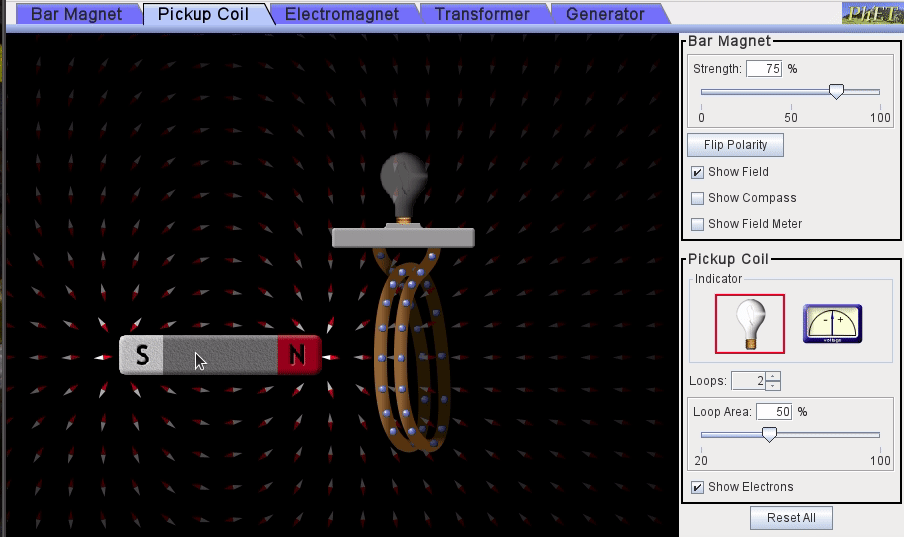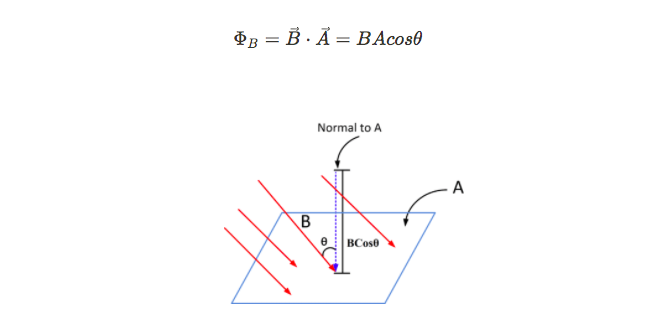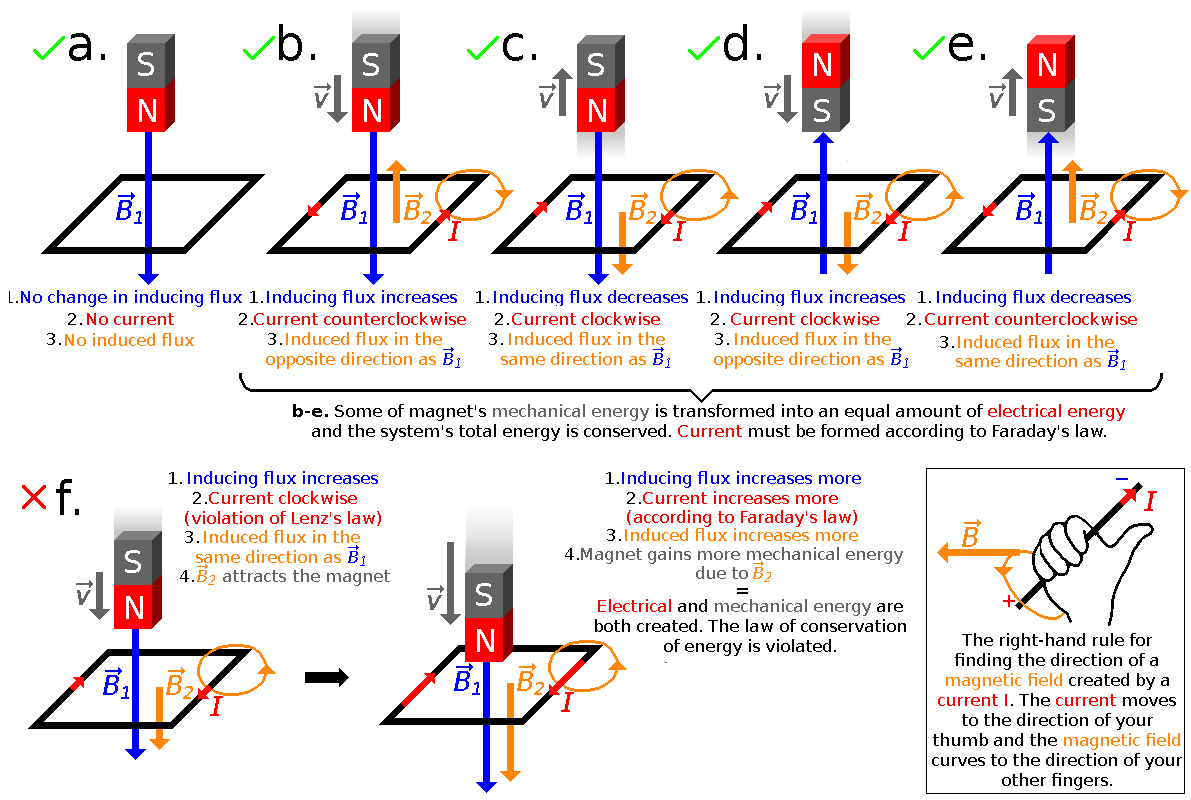Electromagnetic Induction: Understanding the Magic of Magnetism and Electricity
Electromagnetic induction is a cornerstone of physics, enabling the conversion of magnetic energy into electrical energy. This phenomenon underpins many modern technologies, from power generators to electric motors and transformers. In this comprehensive guide, we’ll explore the concepts of magnetic flux, Faraday’s law, Lenz’s law, and the applications of electromagnetic induction, ensuring a clear understanding of these critical principles.
What Is Electromagnetic Induction?
Electromagnetic induction is the process of using magnetic fields to produce a voltage, which can, in turn, generate an electric current if a closed circuit is present. This process is essentially the reverse of what we see in electromagnets, where a current through a wire generates a magnetic field.

The Core Idea
To generate an electromotive force (EMF) or voltage:
The magnetic field must be changing relative to the conductor.
Motion or variation in magnetic flux through the conductor is required.
This principle forms the basis of many electrical devices, including power generators, where mechanical energy is converted into electrical energy.
Magnetic Flux: The Gateway to Induction
Magnetic flux (Φ) is a measure of how much magnetic field passes through a given area. It is a crucial concept in understanding electromagnetic induction as it helps quantify the interaction between magnetic fields and conductive loops.

Formula for Magnetic Flux
Where:
: Magnetic field strength (in Tesla, T)
: Area through which the field passes (in m²)
: Angle between the magnetic field and the perpendicular to the area
Key Points:
Magnetic flux is maximal when the field is perpendicular to the surface.
Flux decreases as the angle increases, reaching zero when the field is parallel to the surface.
The SI unit of magnetic flux is the Weber (Wb).
Applications of Magnetic Flux
Magnetic flux is critical for:
Understanding how magnetic fields interact with conductive materials.
Designing devices like transformers and electric generators.
Faraday’s Law of Induction
Faraday’s law is the foundation of electromagnetic induction. It states:
Where:
: Induced electromotive force (EMF, in volts)
: Number of turns in the coil
: Rate of change of magnetic flux
Key Insights:
A changing magnetic flux through a loop induces an EMF.
The greater the rate of change, the stronger the induced EMF.
Practical Example:
In a power generator, rotating a coil in a magnetic field changes the flux, inducing an EMF that generates electricity.
Lenz’s Law: Determining the Direction of Induced Current
Lenz’s law provides the direction of the induced current and is derived from the conservation of energy. It states:
The direction of the induced EMF or current is such that it opposes the change in magnetic flux that caused it.
Why Lenz’s Law Matters
Prevents violations of the conservation of energy.
Ensures that the induced current works against the source of flux change.
Right-Hand Rule for Induced Current
Point your thumb in the direction of the magnetic field’s change.
Curl your fingers in the direction of the induced current.
This will help visualize how the current loops to oppose the flux change.
Inducing EMF: Methods and Techniques
How Magnetic Flux Changes
Magnetic flux can be altered in three main ways:
Change the Magnetic Field (Φ): Increase or decrease the strength of the magnetic field.
Change the Area (A): Vary the size of the loop or move it relative to the magnetic field.
Change the Orientation (θ): Rotate the loop to adjust the angle between the field and the area vector.
Example: Moving a Magnet Through a Coil
When a magnet moves through a coil:
As the magnet approaches, flux increases, inducing a current in one direction.
As the magnet leaves, flux decreases, reversing the current’s direction.


Applications of Electromagnetic Induction
Electromagnetic induction drives a vast range of technologies that we rely on daily. Here are some notable examples:
1. Electric Generators
Convert mechanical energy into electrical energy.
Rotating a coil within a magnetic field induces an EMF, powering electrical grids.
2. Transformers
Transfer electrical energy between circuits via electromagnetic induction.
Step-up transformers increase voltage for efficient transmission.
Step-down transformers reduce voltage for safe usage.
3. Induction Stovetops
Use changing magnetic fields to induce currents in ferromagnetic cookware, generating heat directly.
4. Wireless Charging
Changing magnetic fields in the charging pad induce currents in the device, charging the battery wirelessly.
5. Magnetic Levitation (Maglev)
Trains utilize electromagnetic induction for frictionless, high-speed travel.
Practice Problem
Problem 1: Direction of Current
A magnet moves towards a stationary coil. What is the direction of the induced current?
Solution: Using Lenz’s law, the induced current will oppose the motion of the magnet. Apply the right-hand rule to determine the current’s direction.
Conclusion
Electromagnetic induction is a fascinating phenomenon that bridges the realms of electricity and magnetism. From its theoretical underpinnings in Faraday’s and Lenz’s laws to its real-world applications, understanding this concept empowers us to harness electromagnetic forces for innovation and convenience. Whether it’s generating electricity or enabling wireless technologies, electromagnetic induction remains an indispensable aspect of modern physics and engineering.







